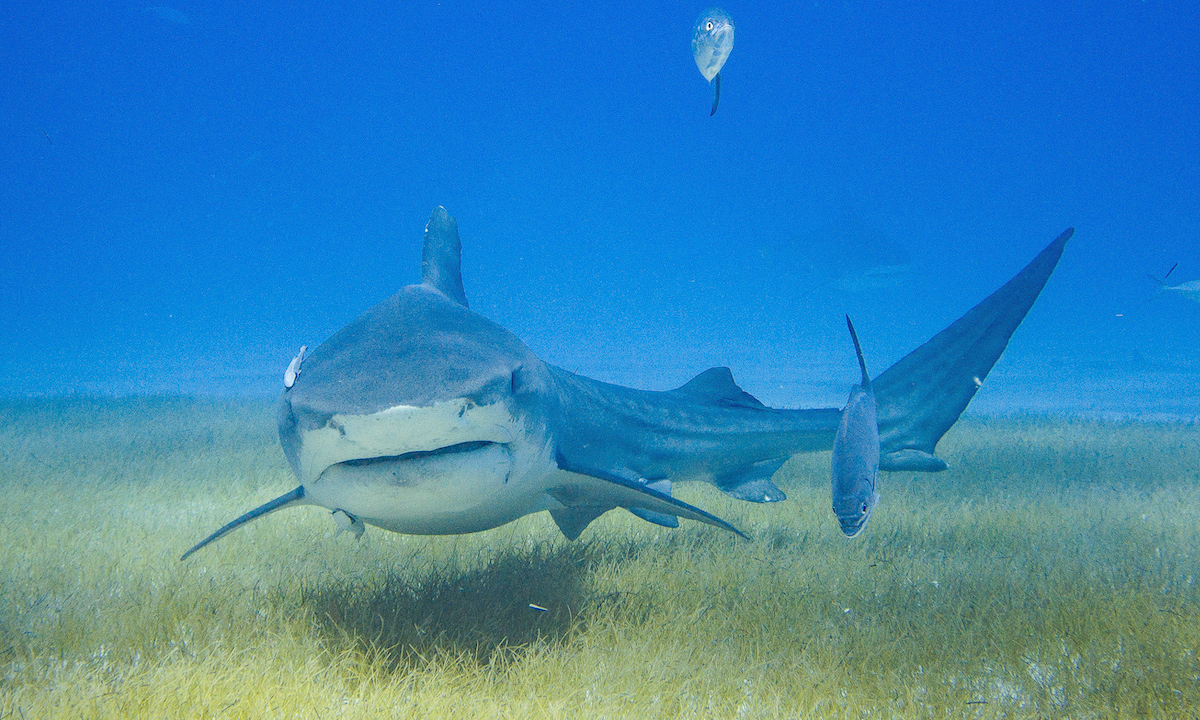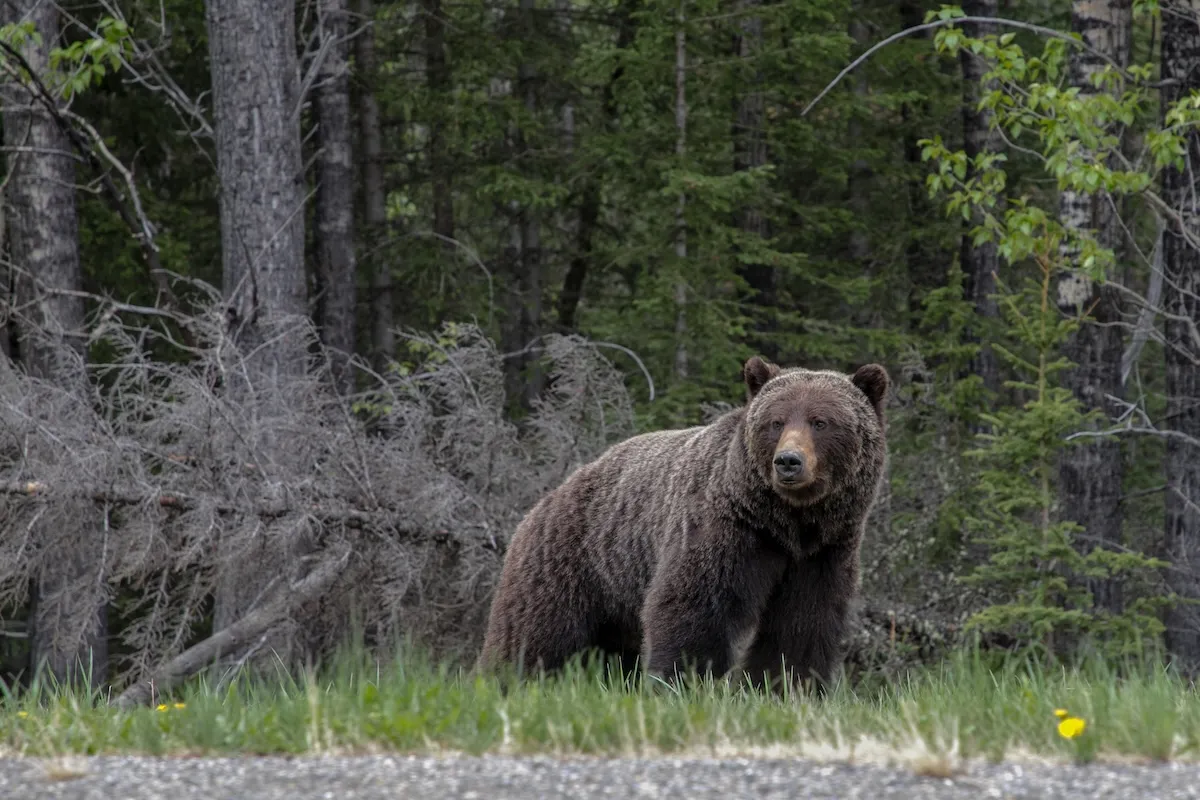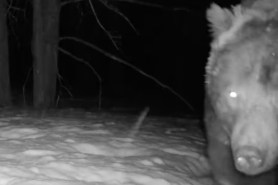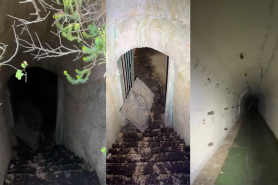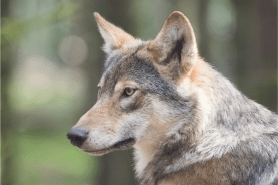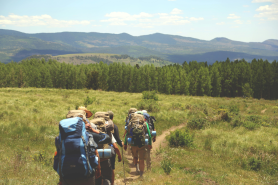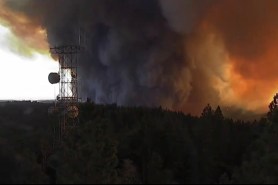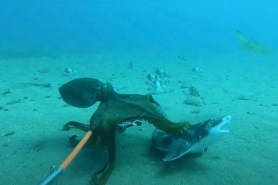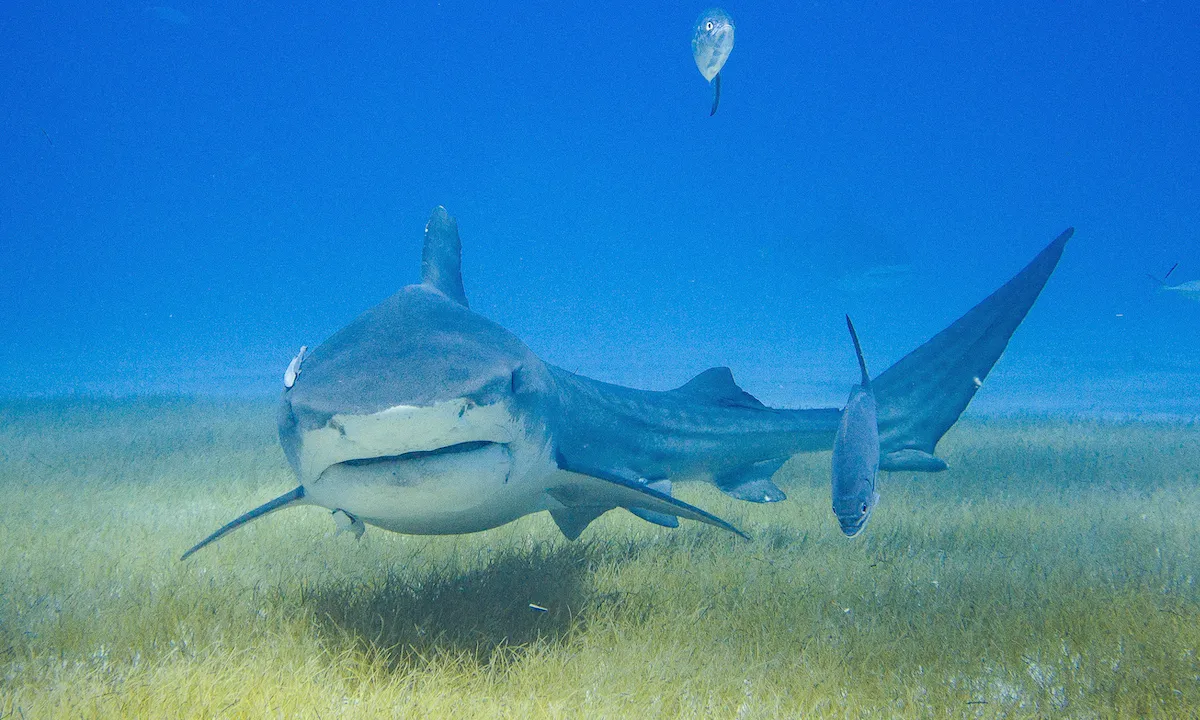

Earlier this year, researchers in the Bahamas wanted to get a better look at the ocean floor—and decided the best way to do that was to strap cameras to a bunch of sharks.
Videos by Outdoors
At the time, the scientists were looking for new patches of seagrass, a type of ocean vegetation that many species rely on for food and shelter. Tiger sharks are one of those species.
The sharks spend most of their time patrolling the ocean floor, looking for sea turtles to eat, reports AS News. And, unlike many other types of fish, sharks are big enough to carry a camera around. (When fully grown, they can be up to 18 feet long and weigh 1,200 pounds.)
So, the researchers clambered onto a boat, shark bait and scientific equipment in hand. Using a humane hooking method, they managed to capture eight sharks in total. The team then attached 360-degree cameras and GPS trackers to animals’ dorsal fins with “biodegradable cable ties,” reports The Guardian.
Each camera remained attached for about six hours before detaching and floating to the surface. That gave the scientists plenty of footage to review—and enough data to reveal a startling discovery.
By watching the videos and mapping the sharks’ whereabouts, scientists were able to pinpoint the location of a vast underwater grassland that they had no idea existed. Imagine miles and miles of gently waving seagrass—a gorgeous ocean prairie teeming with fish, turtles, and endangered manatees.
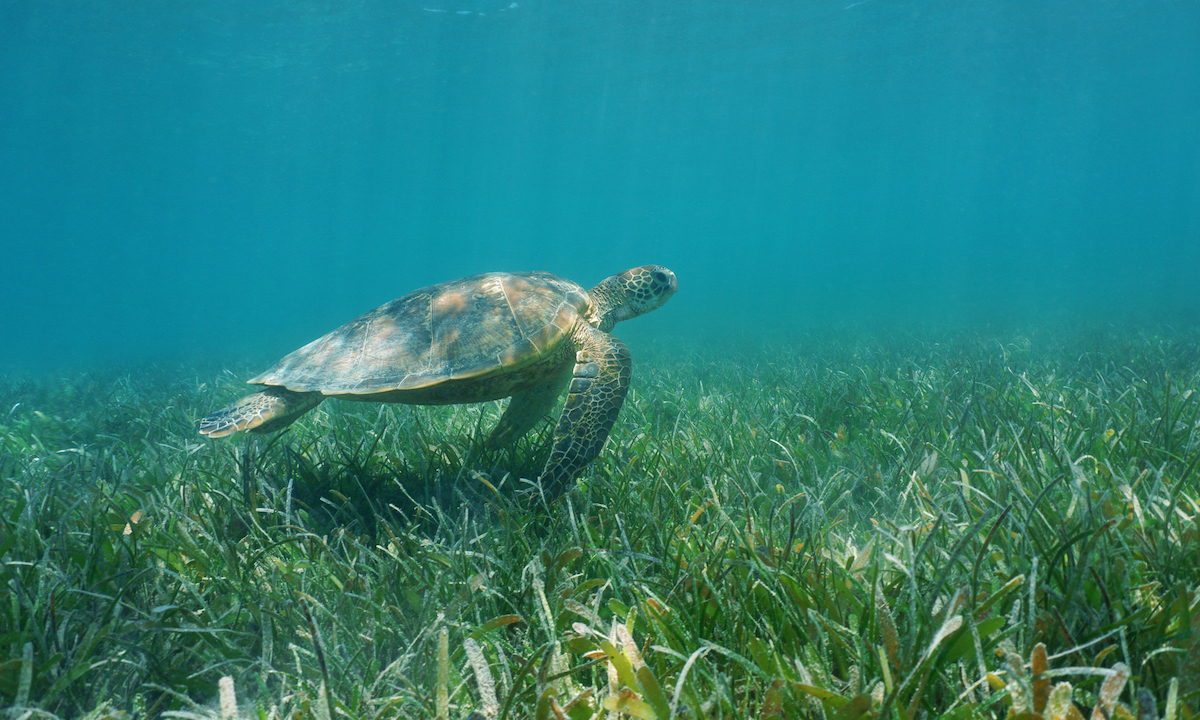
The scientists calculated more than 35,000 square miles of sea grass in total. That’s about the same size as the land area of Portugal.
Seagrass may not sound very exciting at first blush, but for marine biologists, this was the jackpot. Seagrass provides important habitat for many species of fish. Other species use the meadows as nurseries to raise their young.
Seagrass can also sequester carbon, reports Science News. In fact, these underwater meadows are able to capture and trap carbon dioxide about 35 times faster than rainforests can. So this new discovery isn’t just important for the creatures of the Bahamas. It’s important for our entire planet, too.
